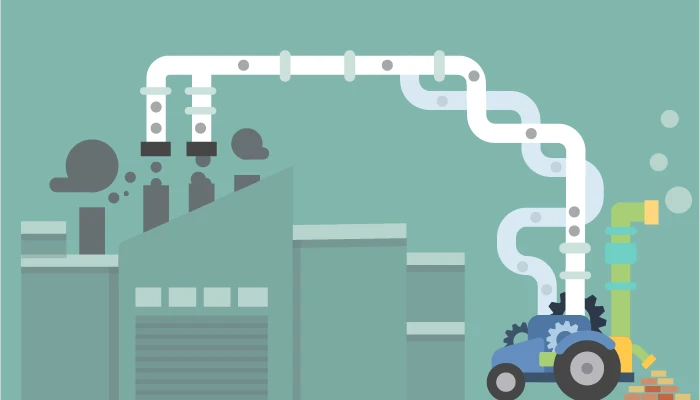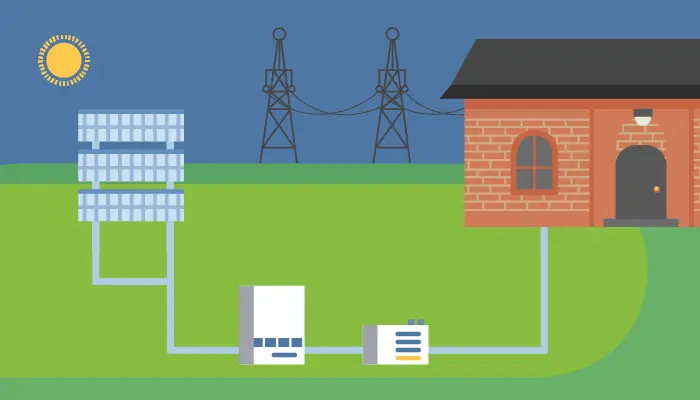& Construction

Integrated BIM tools, including Revit, AutoCAD, and Civil 3D
& Manufacturing

Professional CAD/CAM tools built on Inventor and AutoCAD
If you listen to today’s climate debate, there’s a lot of noise in the extremes: One end of the spectrum says it’s nothing to worry about; the other says the Earth will be destroyed by 2050. Neither are constructive conversations because denial and fear lead to panic, rage, and finger-pointing—not solutions. It’s also no longer a debate that it’s happening but a debate about what to do and when.
For those who have been around since the ’70s, it’s déjà vu: Back then, there was growing panic about pollution and overpopulation, with fear and denial feeding off each other. Some people thought pollution wasn’t a problem; nothing needed to change.
On the other side, movies and books of the era depicted disaster: Soylent Green, Silent Running, No Blade of Grass, The Population Bomb. People were going to choke to death on pollution. Overpopulation would lead to mass starvation and cannibalism. But when the initial panic subsided, people could finally take a breath (no pun intended), think calmly and clearly, and take pragmatic action.
And people did take action, including policy (the Clean Air Act, Clean Water Act, and global pollution standards), innovation (pollution-control technology for power plants and food-production technology to feed the nearly doubled global population), and infrastructure (increased investment in public transportation).
Was it enough to prevent the growing climate problems of today? No, and as time passed, some people became complacent. That’s not an option today.
But instead of scaring everyone with horrific doomsday scenarios that cause “eco-anxiety” and attempting to frighten people into actions that may not solve the problem or have unintended consequences, the best way forward is bold action on policy, ongoing innovations in technology, and rapid investments in energy infrastructure. These are likely the best opportunities for change and a path to bring disparate views closer together.
One of the more useful treatises on climate change was produced by a team at Yale University. “Modeling Uncertainty in Integrated Assessment of Climate Change” digs deep into math and science, but here’s the bottom line: “There is a great degree of uncertainty in all models of climate change, and understanding that uncertainty is critical to making informed and timely choices to combat climate change.”
While some studies project post-industrial (1900 and beyond) global temperature increases of 5 degrees C (9 degrees F) or more, the current consensus is more like 3 degrees C (5.4 degrees F). Now, before some of you conclude, “That’s not so bad,” let me be clear: It’s bad.
A change in global temperature like that will raise sea levels, shift weather patterns (hurricanes, wildfires, heat waves), redefine arid and fertile regions, displace millions of the world’s poorest people, and significantly impact how humans live. What it won’t do is destroy the planet or all of humanity. Nor will the change happen suddenly and without warning. Denying the problem or running for the hills are both unjustified, and neither will help make meaningful and lasting change.
Andrew Anagnost, Autodesk CEO
Autodesk was clear in its condemnation of the US withdrawal from the Paris Agreement in 2017 and shares the same view of the formal departure announced last week. As a company, we also denounce the relaxation of CAFE standards for US automobile emissions.
We believe policy makers need to reverse rollbacks on carbon-intensive industries and then formulate and adopt bold new policies. Governments need to push carbon-intensive businesses to adopt sustainable practices. Public policy needs to provide negative incentives for major polluters and positive incentives for investment in sustainable practices and technology that benefit society. The best solution is to put a price on carbon emissions.
Properly structured carbon-pricing programs make high-carbon processes less profitable while mitigating impact on individuals. They also raise significant revenue that could support communities most impacted by pollution and rising energy costs. Governments should also spur innovation in climate solutions, including solar, wind, geothermal, hydroelectricity, ocean thermal energy, hydrogen and fuel cells, biomass, and possibly even the controversial stopgap of geoengineering.
That’s easier said than done, but Autodesk is committed to leading other businesses in publicly supporting US carbon-pricing programs, similar to RGGI in New England and California’s Cap-and-Trade Program. Businesses must use their significant political power to support changes in public policy that incent the right behavior—even if costly or controversial.
Who knows where the next groundbreaking innovations will come from, but they need to keep coming. To combat climate change, robust incentives and support for innovative technologies are necessary to slow the pace of global temperature rise and prevent future increases beyond 2100.
The Autodesk Foundation has programs that invest in start-ups, nonprofits, and other organizations creating the next generation of sustainable technologies. There’s a lot of innovative work going on in carbon capture and sequestration, building materials, and sustainable energy production (including modern nuclear power to bridge the gap between fossil fuels and renewables).
But the key area where we’re investing is in developing the technology to support innovation. Within the next five years, there will be dramatic changes in how people design, construct, and manufacture through AI and cloud computing. Architects are already deriving insights to put climate change in context, understand the decisions they need to make, and demonstrate what better looks like.
Recently, construction giant Skanska partnered with Arup, the Carbon Leadership Forum, Katerra, Microsoft, and Autodesk to design the Embodied Carbon in Construction Calculator (EC3), which calculates embodied carbon within building materials to help meet the Paris Agreement’s carbon-reduction targets.
Something that goes overlooked but was highlighted by Bill Gates is the need for better power storage and intelligent energy grids that manage the capture and distribution of sustainably produced energy. He advocates that wind and solar subsidies should be diverted to grid-energy storage and batteries, but some of that money could also come from big oil and gas companies already investing billions in renewable energy. Renewables need all the help they can get.
One positive sign is that Wood Mackenzie Power & Renewables forecasts energy-storage investments will grow to $71 billion by 2024. It’s one of the biggest areas where people can make an impact on the trajectory of the climate because a fully electric economy—powered sustainably—needs new storage technologies and power grids to operate effectively.
There needs to be broad, global investment in a new power-distribution infrastructure, and smart grids need to store overcapacity energy for nighttime use. Without a smart, adaptable grid that can store surplus power, it’s just wasted.
To help enable that infrastructure development, more people need to put solar on their homes and businesses. It is increasingly affordable, and if you can manage it, don’t just look at the financial ROI—look at the social ROI as well. It allows you to contribute directly to change and funds the future development of the technology.
Technology companies need to help their employees and customers invest more productively in a sustainable future. At Autodesk, we’re exploring numerous programs for our employees and customers to ramp up their sustainable contributions and initiatives.
We’re investigating ways to help customers realize their sustainability goals—clean-energy generation, smart storage/transmission, net-zero-energy buildings—through automation and insights in our technology. In fact, over the next few years, we will ramp up our financial commitment to this work, totaling 1% of our profits.
We also intend to make the company completely carbon neutral by the end of 2020, based on the World Bank’s carbon-pricing principles. That means using our own products to green our offices, operating with renewable energy in offices and the cloud, and partnering with customers on innovative carbon-offset projects.
Together, the world’s citizens, governments, and businesses can create meaningful change to mitigate impacts on the climate and ensure prosperity for the future. Collaboration—without panic—will drive more progress than anyone working alone or against each other can achieve.
Andrew Anagnost is the president and chief executive officer of Autodesk.Dr. Anagnost’s career spans more than 25 years of product, business, and marketing experience focused on driving strategy, transformation, and product development — and includes positions at Autodesk, Lockheed Aeronautical Systems Company, and EXA Corporation. He also completed a doctorate degree at Stanford University and worked at NASA Ames Research Center as an NRC post-doctoral fellow.Anagnost began his career at Autodesk in 1997 and has held a wide range of roles in the areas of marketing, new business development, product management, and product development. Prior to becoming President and CEO in June 217, he served as Chief Marketing Officer and SVP of the Business Strategy & Marketing organization. In this role, Andrew served as architect and leader of Autodesk’s business model transition—moving the company to become a software-as-a-service (SaaS) solutions provider. Previously, Anagnost held various executive positions across Autodesk. Early in his Autodesk career, he led the development of the company’s manufacturing products and grew Autodesk Inventor revenue to over $500 million.Anagnost is a member of the Autodesk Board of Directors. He holds a Bachelor of Science Degree in Mechanical Engineering from California State University, Northridge (CSUN), and holds both an MS in Engineering Science and a PhD in Aeronautical Engineering and Computer Science from Stanford University.
AECO
AECO
AECO







